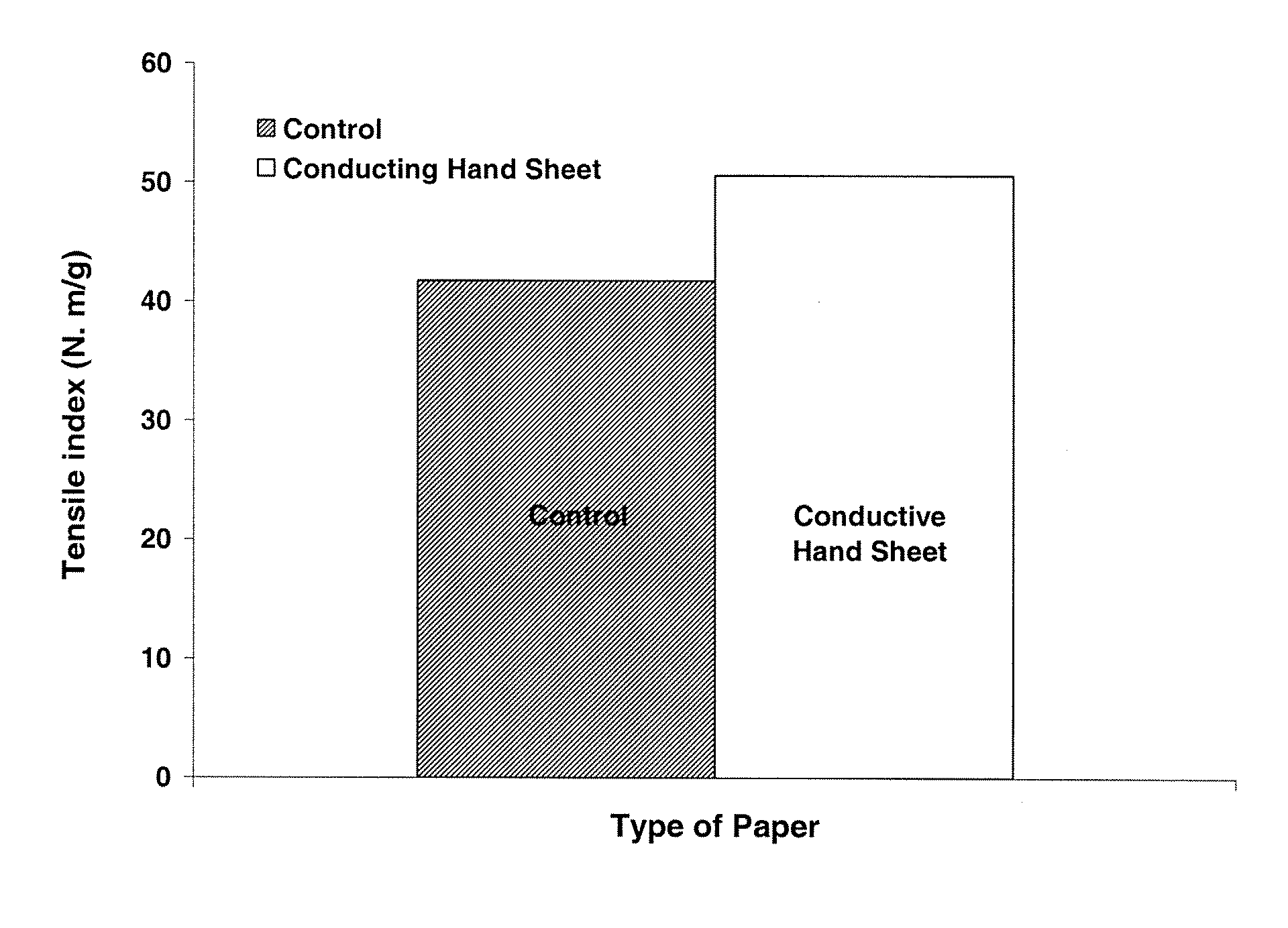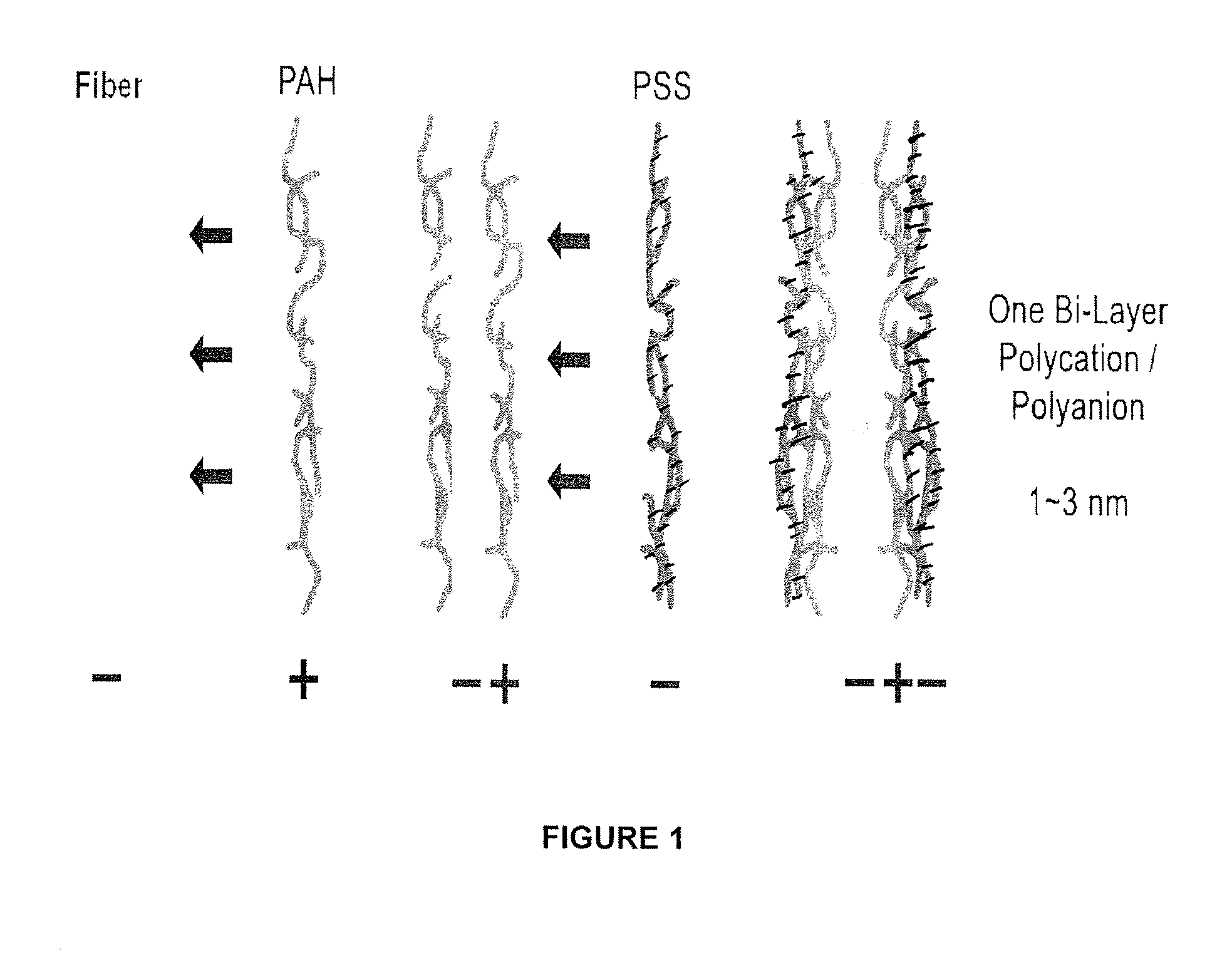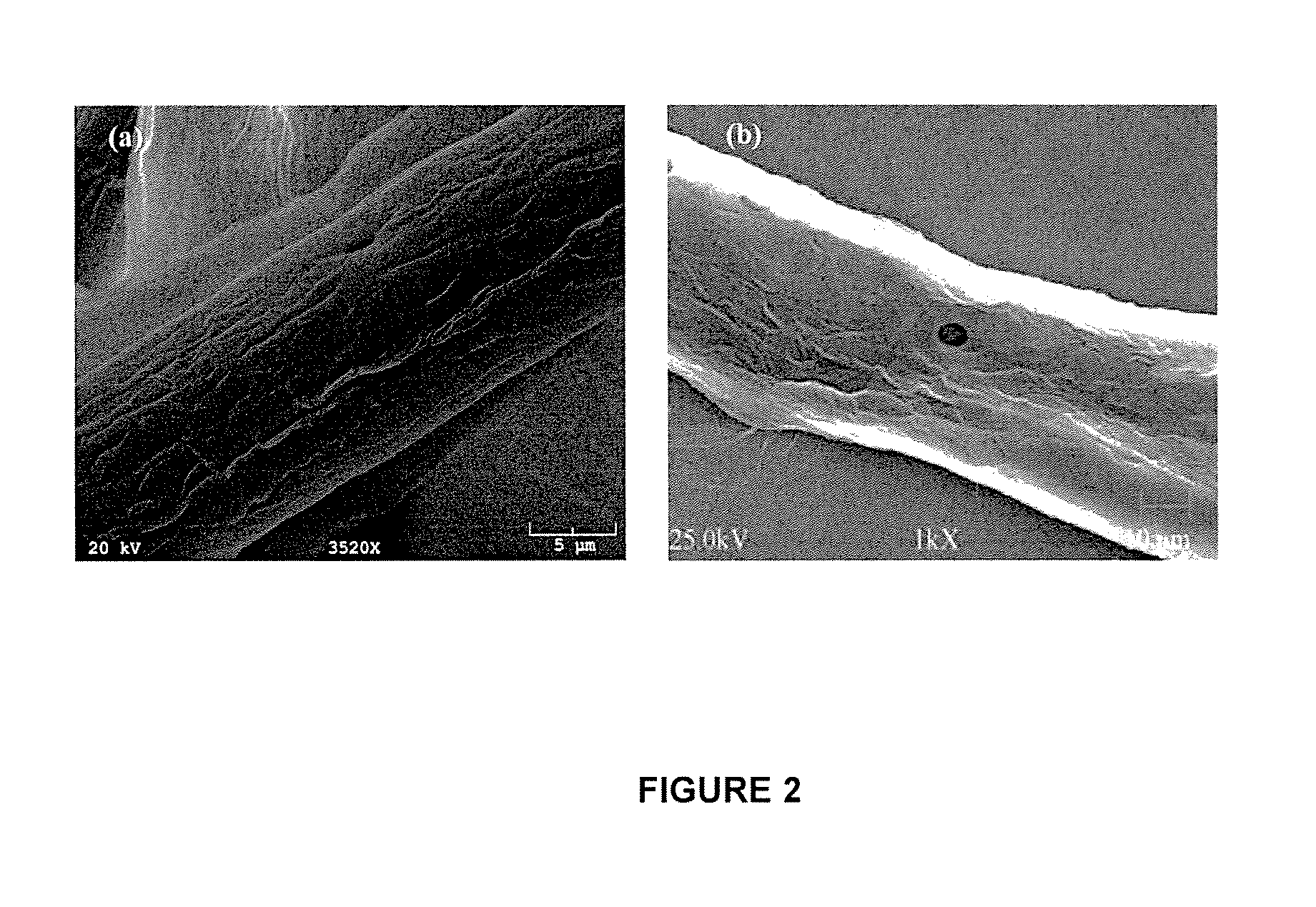Method for the manufacture of smart paper and smart wood microfibers
a technology of smart paper and wood microfibers, which is applied in the field of manufacturing of conductive paper and conductive fibers, can solve the problems that materials and chemicals are not always cost effective or environmentally friendly, and achieve the effects of easy mass production, enhanced electrical, magnetic and/or optical activity properties, and environmental protection
- Summary
- Abstract
- Description
- Claims
- Application Information
AI Technical Summary
Benefits of technology
Problems solved by technology
Method used
Image
Examples
1st embodiment
1st Embodiment
[0048]A method for making electrically conducting wood microfibers, comprising (a) forming an aqueous pulp of lignocellulose fibers; (b) nanocoating said aqueous pulp of lignocellulose fibers by alternatively adsorbing onto the fibers multiple consecutively-applied layers of organized ultra thin and oppositely-charged polyelectrolytes, at least one of said polyelectrolytes being an electrically conductive polymer or nanoparticle, and another of said polyelectrolytes having a charge opposite of said electrically conductive polymer or nanoparticle, thereby making a modified aqueous pulp of electrically conductive multi-layer nanocoated lignocellulose fibers; and (c) draining the water out of the modified aqueous pulp to form electrically conducting wood microfibers. Electrically conductive polymers or nanoparticles are materials which exhibit electrical conductivity or semi conductivity properties. The ultra thin and oppositely-charged polyelectrolytes should have a thic...
2nd embodiment
2nd Embodiment
[0049]The method of the 1St Embodiment, wherein said electrically conductive polymer or nanoparticle is chosen from the group consisting of poly(3,4-ethylene-dioxythiophene-poly(styrene sulfonate) (PEDOT-PSS), polypyrrole (PPY), poly-(3-hexylthiophene (P3HT), polyaniline, polythiophene, polyphenylene, Au, Cu, Ag, Pd, Zr, Cr, and carbon nanotubes, and said polyelectrolyte having a charge opposite of said electrically conductive polymer or nanoparticle is chosen from the group consisting of poly(allylamine hydrochloride) (PAH), branched poly(ethyleneimine) (PEI), poly(diallyldimethylammonium chloride) (PDDA) and poly(styrene sulfonate) (PSS).
3rd embodiment
3rd Embodiment
[0050]A method for making electrically conducting paper, comprising (a) forming an aqueous pulp of lignocellulose fibers; (b) nanocoating said aqueous pulp of lignocellulose fibers by alternatively adsorbing onto the fibers multiple consecutively-applied layers of organized ultra thin and oppositely-charged polyelectrolytes, at least one of said polyelectrolytes being an electrically conductive polymer or nanoparticle, and another of said polyelectrolytes having a charge opposite of said electrically conductive polymer or nanoparticle, thereby making a modified aqueous pulp of electrically conductive multi-layer nanocoated lignocellulose fibers; (c) draining the water out of the modified aqueous pulp to form sheets of electrically conductive multi-layer nanocoated lignocellulose fibers; (d) drying said formed sheets of electrically conductive multi-layer nanocoated lignocellulose fibers; and (e) processing the dried nanocoated sheets to make a finished paper having enh...
PUM
| Property | Measurement | Unit |
|---|---|---|
| thickness | aaaaa | aaaaa |
| thickness | aaaaa | aaaaa |
| diameter | aaaaa | aaaaa |
Abstract
Description
Claims
Application Information
 Login to View More
Login to View More - R&D
- Intellectual Property
- Life Sciences
- Materials
- Tech Scout
- Unparalleled Data Quality
- Higher Quality Content
- 60% Fewer Hallucinations
Browse by: Latest US Patents, China's latest patents, Technical Efficacy Thesaurus, Application Domain, Technology Topic, Popular Technical Reports.
© 2025 PatSnap. All rights reserved.Legal|Privacy policy|Modern Slavery Act Transparency Statement|Sitemap|About US| Contact US: help@patsnap.com



